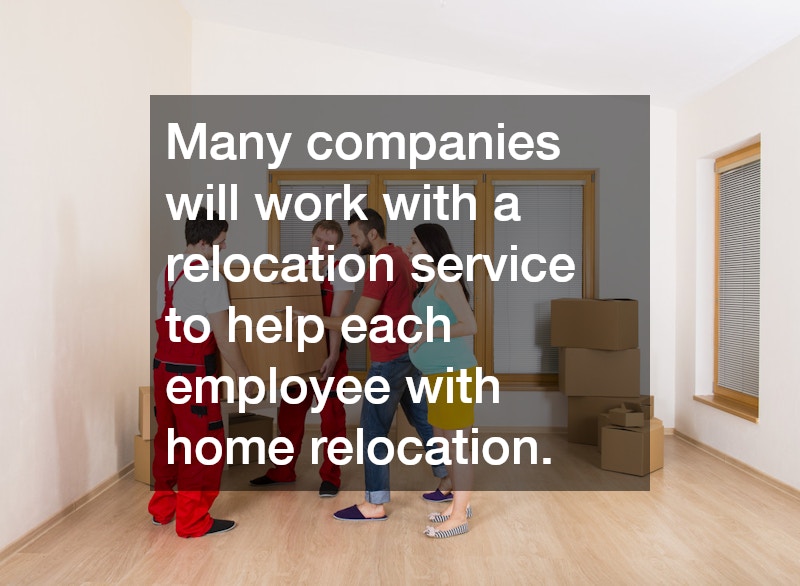Strategies for Companies Looking To Relocate


If you’ve been notified that your company is moving to another location, you may have many concerns. You may be concerned about selling your home, uprooting your family, and finding a home in a new location. It will be your company’s responsibility to relocate the office furniture and computers, but you’ll be most concerned with your own role in the work relocation process.

Many companies will work with a relocation service to help each employee with home relocation. They may oversee the sale of your home, and they could help you search for a new place to live in the city where your office will be relocated. Some companies will offer a buyout service, where they will purchase your home and give you additional incentives to help with expenses as you move to another place.
Your company’s relocation plan may offer you a discount on using a contracted moving service. These are typically large, nationally-based services that will help all employees. The commercial division of those moving companies might also handle moving office furniture and computers. Once you know all the options offered for your work relocation, decide based on your family’s needs and your career priorities.
Many companies decide to uproot their facility for expansion purposes, which is extremely taxing and stressful for both the company and its employees. When a company decides to relocate, they’re responsible for ensuring every employee is properly placed and all operations are still running at an optimal level. There are various methods businesses use for consolidation and expansions, including scheduling developments and monitoring, building selection, planning, and options analysis, budget supervision and adherence through negotiation and problem solving, and full or global project management and coordination of architects, vendors, and construction teams.
Through the various methods of operations, certain assessments include global capacity strategic planning, facility design, and documentation the manufacturing plant floor plan including important design assumptions, goals, and project constraints that closely follows potential opportunities for improvements such as short and long-term project goals that are given to factory layout consultants. Typically, plans are shared with factory layout consultants to review and further detail state layouts, process descriptions and capital investment plans for ease of execution and project management. When a company relocates, there’s usually a process to maximize efficiency and revamp their old processes for something that ushers in their significant change. Typically, a change of workflow is targeted—an efficient layout provided by factory layout consultants, and other materials to significantly reduce labor and inventory while improving customer service.
Plant Layout
The design process for companies strongly encourages and reinforces client participation through engagement. There are certain requirements factory layout consultants must meet to begin the execution of the proposed space. There are allocated consultants that facilitate the selection of an appropriately sized site and building based on the company’s programming need and growth expectations; factory layout consultants create detailed layouts and based on their amount of workflow and operational optimization. For a company to effectively implement a project, it requires collaboration, planning and hands-on involvement, especially for large-scale projects. There are proven methods and reliable tools for factory planning, including:
a. Value stream analysis and value stream design
b. Methods Time Measurement (MTM)
c. Shop floor management methods with factory layout consultants
d. Custom-developed tools for the sizing of warehouse and buffer system (e.g., Kanban/supermarket layouts)
e. Layout planning (block layout, 3D models, CAD)
f. Process engineering methods
g. Custom-developed tools for the dimensioning of material transport systems (e.g., AGVs, tugger trains, etc.)
i. Acceptance and claim management templates
j. Customized project management (cost monitoring, scheduling, log management, OPL)
